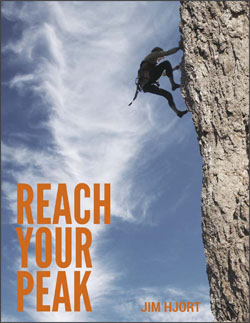Cutting Your Addictions Down to Size
/Despite your best intentions and efforts, an attempt to let go of an addiction or change another compulsive behavior pattern* often includes relapse at some point.
People usually talk about relapse within the context of substance addiction, but many of the same challenges exist in any type of long-term behavior modification effort. Cutting back on watching television or abstaining from eating unhealthy foods are also subject to relapse. Changing the way you conceptualize and approach your behavior can help you turn the odds in your favor.
Your behavior is not an entity
People have the tendency to identify their addictions as entities outside of themselves. You might say that “smoking has a real grip on me,” “I’m fighting my addiction to food” or "that's my addiction talking."
These statements can be a convenient way to language the problem, but personifying a behavior pattern as a thing that grips, fights and talks can subtly bestow upon it a substance that it lacks. When smoking (the act) becomes Smoking (the thing), you’ve become engaged in a battle with a shadowy . . . something . . . outside of yourself which, for all you know, may have superhuman strength and mysterious powers over you.
On the other hand, smoking (the act) is a human-scale behavior. There is just a craving to smoke (or overeat, drink or use the internet) that arises within you, and your reaction to it. Both the urge and the reaction emerge in a particular way from complex relationships between biology, environment, and conditioning, and may seem so powerful as to be invincible.
However, there is no Smoking that you need to battle. An urge or craving to smoke arises, along with some physical sensations, and then rationalizations. You will or won't smoke. The craving, physical sensations, and thoughts will ultimately pass either way. That's all.
Leaning into it
Let’s say you’re a sober person and find yourself in a bar, not wanting to drink alcohol, but feeling uncomfortable with a club soda in your hand and having the urge to drink. Or you’re trying to stop overindulging in sweets, but everyone at the (weekly?!) office birthday party is eating cake, and your mouth is watering . . . and they’re handing you a slice.
You could ball your fists up and square off with Drinking or Overeating through sheer willpower, or you could turn and flee the discomfort. But what about another approach? What would happen if you turned toward the difficulty and explored it with curiosity, as if you had to describe what you’re feeling to someone?
I'm not talking about doing anything that jeopardizes your program of change, especially if you're trying to recover from a substance addiction. Depending on your particular situation, leaving the situation may absolutely be the best thing to do. But it's important to know that you have the ability to tolerate more discomfort than you may realize, if you're willing to turn toward it and really get to know it.
Urges and emotions are often visceral, physical phenomena first, before the mind gets involved. Where in your body do you feel the urge to have that drink?
In other words, ask how you know that you're having the urge, and go exploring for the physical sensations in your body. Before the rationalizations come (the "voice" of your addiction), there is the craving, and the craving is just a sensation, so try to see it for what it is. Even if you stay to explore the discomfort for just a minute before leaving, that's a good place to start.
Whether you leave immediately when the craving hits, white-knuckle it through to the other side, or stay awhile to explore it, you will be practicing your desired behavior of not eating a piece of cake.
However, only one of these options will help you to get at the root of the problem. By approaching your discomfort with curiosity—friendliness, even—you will also open yourself fully to whatever underlies it.
In the bar, maybe you feel your heart beating faster and heat rising in your face—the signs of insecurity and social anxiety, perhaps. At the office party, you may feel the same thing, along with your watering mouth and the pangs of your growling stomach.
Over time, you will see that those feelings and sensations may be attention-grabbing and very uncomfortable, but they don’t have the power to kill you.
They also point to a deeper truth: that the urge to drink or overeat stems from underlying emotional distress, which is where the real work needs to be done. The craving is a manifestation of wanting to feel better, so it’s not an adversary. It’s just clueless.
So, if you really must personify your addiction, then at least see it as the well-intentioned, bumbling fool that it is.
As you deconstruct the urges and cravings, you'll see their emergence, the moment-to-moment changing of their sensations, and their ultimate disappearance, happening without you doing anything.
If you run from them without even looking at them, it’s like fearing the monster under your bed instead of getting on your knees with a flashlight and finding that it’s just your dimwitted friend wearing a mask.
____________________________________________________
* From a mental health standpoint, there is a distinction between compulsive and addictive behavior. A diagnosis of addiction (i.e. dependence) requires symptoms like increasing tolerance and withdrawal symptoms, which may not characterize every compulsive behavior.
Here, I'm using the terms interchangeably because of their commonalities: the underlying drive to relieve anxiety of some kind, and the seeming inability to stop the behavior, even though you want to, or know you should.


















